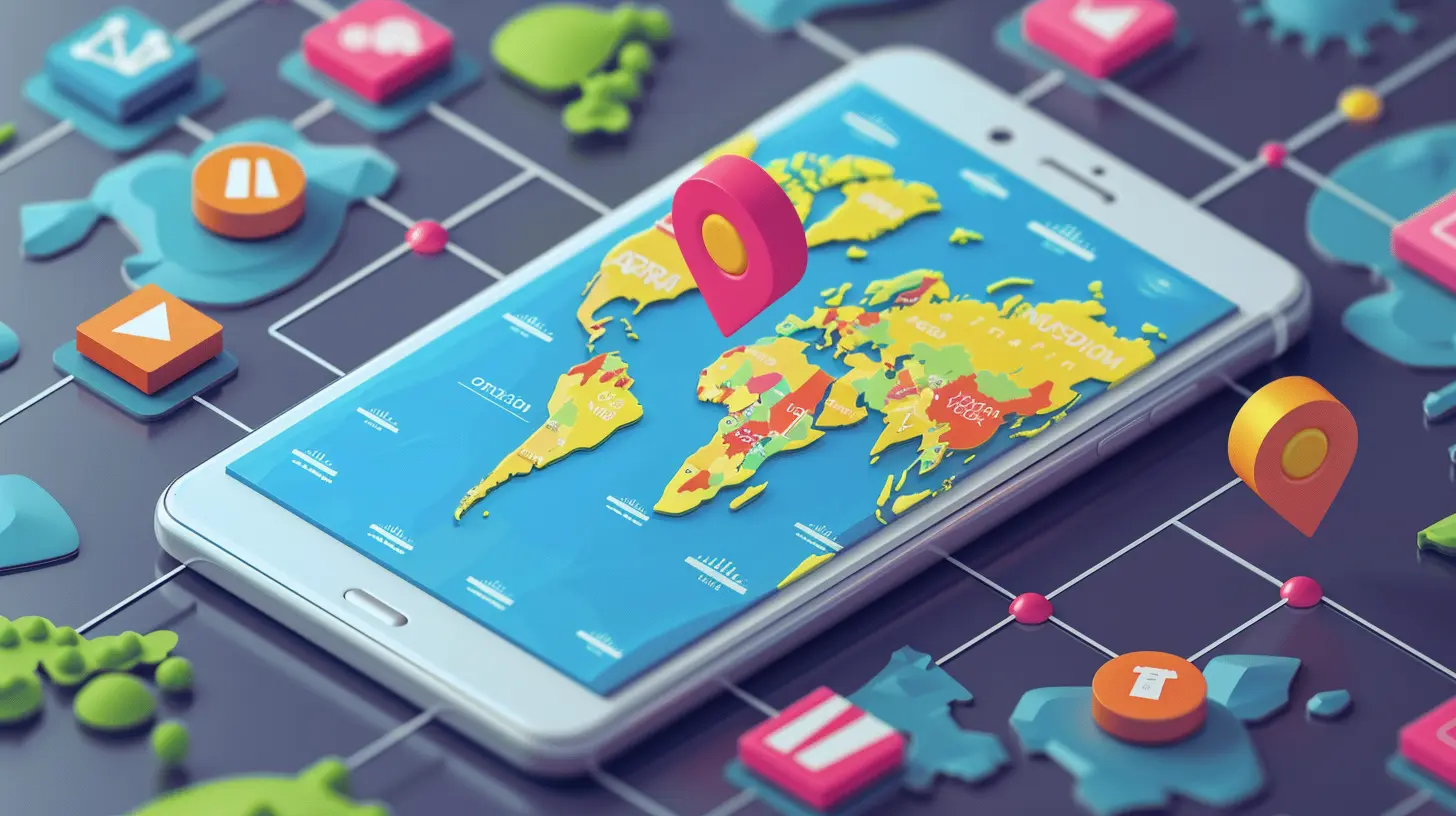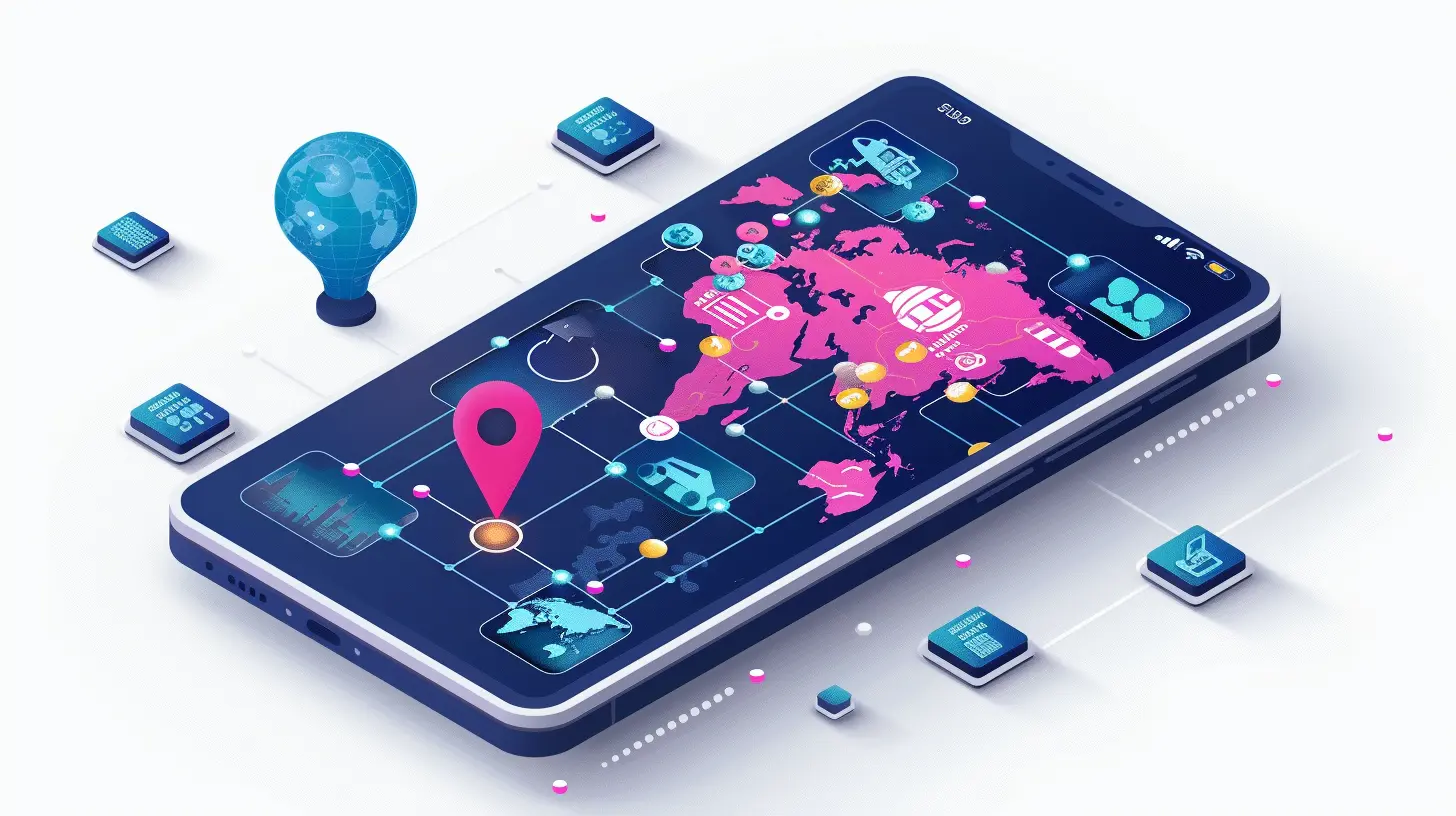App Localization Tips for Global Reach and Engagement
2 November 2025
In today's interconnected world, launching an app globally isn’t just about translating words—it’s about cultural adaptation. If you want your app to succeed in international markets, localization is a must. A poorly localized app can confuse and frustrate users, leading to bad reviews and low engagement. But when done right? It opens the door to massive growth and a loyal global user base.
So, how do you ensure your app resonates with users worldwide? Let’s dive into the best app localization tips to boost your global reach and engagement. 
What Is App Localization?
Before we get into the tips, let’s clarify what localization actually means.App localization is the process of adapting your app to different languages, cultures, and regional expectations. It goes beyond translation—everything from date formats, currencies, and images to UI elements and even humor needs to align with the target audience.
For example, an emoji or color that’s harmless in one country could have negative connotations in another. Getting these details right can make the difference between app success and failure. 
Why App Localization Matters
Why should you invest time and money into localization? Here are some undeniable benefits:- Higher Engagement & Retention – Users are more likely to stick around when they feel the app is tailored for them.
- Increased Downloads – People prefer apps available in their native language.
- Better Revenue Opportunities – Localized in-app purchases and advertisements perform better.
- Competitive Edge – A well-localized app can outshine competitors in global markets.
Now that we understand its importance, let's look at some practical localization tips. 
1. Start with Market Research
Not all markets are worth your time (harsh but true). Before localizing your app, analyze potential markets using:- App store data – Identify where your app is already getting organic traction.
- Competitor analysis – See which markets competitors are targeting.
- User demographics & behavior – Understand language preferences and cultural nuances.
Focusing on high-potential markets ensures you get the best return on investment. 
2. Use Internationalization from the Start
Internationalization (i18n) is the backbone of smooth localization. If your app isn’t built with localization in mind, you’ll face headaches later.Here’s how to prepare your app for global growth:
- Keep text separate from code – Avoid hardcoded strings.
- Use Unicode (UTF-8) – Supports multiple languages without encoding issues.
- Allow text expansion – Some languages (like German) require more space than English.
- Use flexible date, time, and currency formats – Adapt to regional preferences.
Think of internationalization as laying down a solid foundation before building a house. It makes future expansions much easier.
3. Invest in Professional Translation
Google Translate might be handy for quick phrases, but when it comes to app localization, professional translators are worth every penny.- Hire native speakers – They understand cultural nuances and slang.
- Use translation management tools – Platforms like Lokalise, Crowdin, or Smartling help streamline processes.
- Avoid word-for-word translations – Some phrases just don’t make sense when directly translated.
A bad translation can ruin your credibility—think of those funny (but embarrassing) translation fails big brands have made. Don't be that brand!
4. Adapt UI & UX for Different Languages
Text length varies across languages, and some languages (like Arabic or Hebrew) are read right to left. Your UI needs to adapt accordingly.Key UI Localization Tips:
- Allow for text expansion and contraction – A button that looks fine in English might overflow in another language.- Support bi-directional text – Ensure your app can handle left-to-right and right-to-left languages smoothly.
- Localize images and icons – Visuals should resonate with each culture’s preferences.
A seamless user experience across languages keeps engagement high.
5. Optimize for Local App Stores
Your app’s metadata (title, description, keywords) should be optimized for each region's app store. Simply using English keywords won’t cut it.Localization Checklist for App Stores:
✅ Translate app title & description properly.✅ Use relevant keywords based on regional search trends.
✅ Adapt screenshots to reflect localized content.
✅ Launch region-specific promotions and A/B tests.
A well-optimized app store entry increases visibility and app downloads.
6. Handle Date, Time & Currency Properly
A simple example: If a U.S. user sees prices in euros (€), they might hesitate. Likewise, displaying dates in MM/DD/YYYY format in a country that uses DD/MM/YYYY can cause confusion.To avoid this:
- Use automated region detection – Show correct formats based on the user’s location.
- Allow users to select their preferred currency, date, and time format.
- Support local payment methods – Some countries prefer e-wallets over credit cards.
Small details like these impact user trust and conversion rates.
7. Test, Test, and Test Again
Localization isn’t a set-it-and-forget-it process. Post-launch testing ensures everything runs smoothly.Key Testing Methods:
- Linguistic Testing – Check for awkward translations or missing strings.- Functional Testing – Ensure buttons, forms, and layouts work flawlessly in all languages.
- Cultural Testing – Validate that imagery and symbols are appropriate for each region.
Use tools like TestFlight (iOS) or Google Play’s internal testing features to refine your localized app before full release.
8. Provide Multilingual Customer Support
If you’re going global, your customer support should be too. Users feel valued when they can get help in their native language.- Implement AI chatbots with multilingual support.
- Create region-specific FAQs and documentation.
- Hire bilingual support agents for major markets.
This reduces frustration and improves ratings.
9. Monitor Feedback & Updates Regularly
Localization isn’t a one-time task. Languages evolve, user expectations shift, and new trends emerge. Keep improving by:✅ Monitoring app store reviews in all languages.
✅ Gathering user feedback through surveys.
✅ Updating translations to reflect language changes.
The more you listen, the better your app will perform globally.
10. Consider Cultural Sensitivity
Different cultures have different values and taboos. What works in one country might offend another.For example:
- A thumbs-up emoji is positive in the US but offensive in some Middle Eastern countries.
- Certain colors hold cultural significance (e.g., red symbolizes luck in China but danger in some Western countries).
Being culturally aware prevents PR disasters and boosts brand reputation.
Final Thoughts
App localization is a game-changer for global success. By translating content, fine-tuning UI, optimizing app store presence, and staying culturally aware, your app can genuinely connect with international users.The most successful apps—think WhatsApp, Instagram, and TikTok—have nailed localization. If you want to capture a global audience, follow these tips and make your app feel like it was built for every user, no matter where they are.
So, are you ready to take your app to new international heights? Start localizing today!
all images in this post were generated using AI tools
Category:
App DevelopmentAuthor:

Kira Sanders
Discussion
rate this article
1 comments
Gideon Alexander
Effective app localization transcends mere translation; it involves cultural adaptation and user-centric design. Prioritizing local customs, languages, and preferences not only enhances user experience but also fosters trust and engagement, ultimately driving global success and expanding market reach.
November 2, 2025 at 5:43 AM

Kira Sanders
Thank you for highlighting the importance of cultural adaptation in app localization! Your insights on user-centric design and local customs are crucial for enhancing user experience and driving global success.


